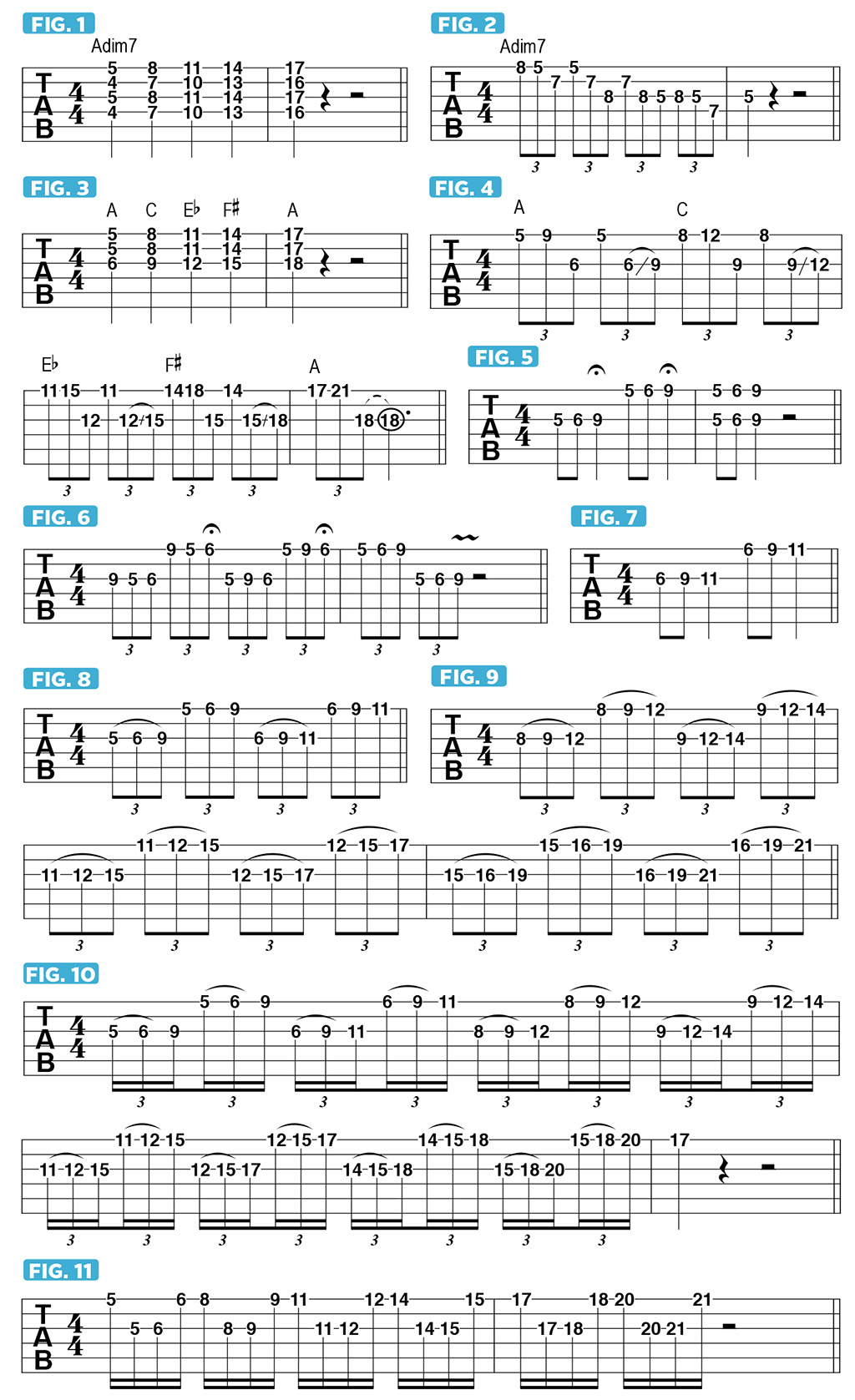Open your mind to new sounds with these symmetrical fretboard patterns
Dweezil Zappa shares ideas for fresh melodic shapes
A technique I like to explore when soloing is to play a specific melodic 'shape', or sequence of notes that creates a pattern on the fretboard, then move it to other strings.
For example, if I were to play the notes at the first, second and fourth frets on the G string, then move that fingering over to the B string and then the high E, that would be an example of a symmetrical fretboard shape - the same fingering, applied across two or more strings, as compared to playing within a specific scale pattern or key center.
Playing symmetrical shapes can open doors to all kinds of new sounds. Let’s use a diminished sound as an approach to this concept.
Most of us are well acquainted with the sound of dim7 chords ascending the fretboard, as illustrated in FIGURE 1, wherein the same voicing and chord 'grip' moves up the neck in three-fret increments. FIGURE 2 demonstrates another common diminished sound, created by playing the notes of the dim7 chord as an arpeggio.
The idea here is to apply the diminished-type division of the fretboard into one-and-one-half step skips to other harmonic ideas.
For example, in FIGURE 3, I begin with an A triad shape on the top three strings and move it up in three-fret increments to C, Eb, F# and then A one octave higher. In FIGURE 4, the individual notes of each triad are played as a melodic arpeggio, the shape of which then moves up in a similar manner.
A common application of diminished harmony is to utilize the symmetrical diminished scale, wherein two dim7 arpeggios, a half step apart, are combined, which gives us as the 'half-whole symmetrical diminished scale'. We can use this scale to create symmetrical fretboard shapes on specific string pairs.
All the latest guitar news, interviews, lessons, reviews, deals and more, direct to your inbox!
In FIGURE 5, I play a shape on the G string and then repeat it on the high E. Try playing every possible combination of these notes, as exemplified in FIGURE 6. FIGURE 7 illustrates the next shape formed by using this formula.
If we combine it with the previous shape, the result in shown in FIGURE 8. And if we continue up the neck, we get the sequences shown in FIGURE 9. In FIGURE 10, I ascend using hammer-ons. FIGURE 11 offers yet another example. Explore every possible deviation.
Dweezil Zappa is a brilliant guitarist and son of the legendary Frank Zappa. For the past 12 years he has toured the world performing his father’s music with Zappa Plays Zappa and other ensembles. His latest album is Confessions of a Deprived Youth (Deep Fried Youth).

